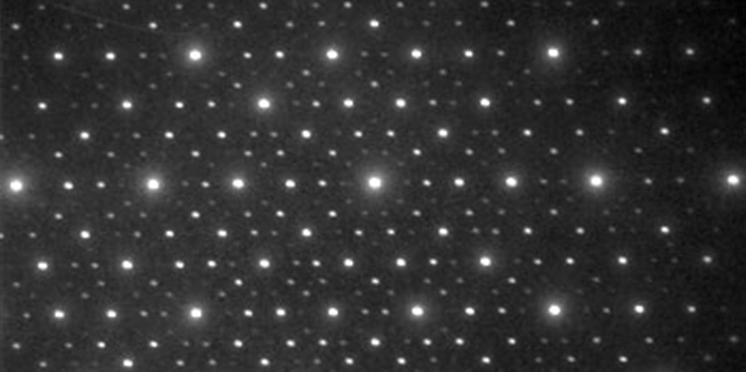ZAF correction
ZAF correction
ZAF correction means a correction that takes into account the following three effects on the characteristic X-ray intensity when performing quantitative analysis: 1) atomic number (Z) effect, 2) absorption (A) effect, and 3) fluorescence excitation (F) effect. These three effects are described below. ZAF is the abbreviation of the effects.
1. Atomic number effect
The atomic number effect is the effect of the difference in the constituent elements of an unknown specimen and of the standard specimen, namely the difference in the average atomic number between the two specimens, on the generation amount of the characteristic X-rays. The effect consists of backscattering factor and penetration factor.
The backscattering factor is to correct the difference in the number of backscattered electrons that do not contribute to the characteristic X-ray generation, which depends on the average atomic number. As the average atomic number of the unknown specimen is larger, the number of the electrons backscattered out of the specimen increases, and the number of the electrons penetrating into the specimen contributing to the X-ray generation decreases.
The penetration factor is to correct the difference in the number of the penetrating electrons contributing to the characteristic X-ray generation, which depends on the magnitude of the mass stopping power.
The penetrating electrons excite and ionize the electrons in the atoms of the specimen, and generate characteristic X-rays while losing their energy due to these inelastic scattering processes. The energy loss of a penetrating electron, when it passes through a unit mass depth (mass thickness) [1], is expressed by the energy-loss ratio, namely the mass stopping power. As the average atomic number of the unknown specimen is larger, the mass stopping power becomes smaller. Then, the generation efficiency of the characteristic X-rays by the penetrating electrons increases.
Thus, the backscattering factor and the penetrating factor behave to cancel out each other for the characteristic X-ray generation efficiency when the average atomic number of the unknown specimen is different from that of the standard specimen.
The atomic number correction factor GZA for calculating the concentration of element A in the unknown specimen is expressed by the following equation using the backscattering factor and the penetration factor.
GZA = (RStdA / RUnkA) x (SUnkA/SStdA)
RStdA: Backscattering factor for element A of the standard specimen.
RUnkA: Backscattering factor for element A of the unknown specimen.
SStdA: Stopping power factor for element A of the standard specimen.
SUnkA: Stopping power factor for element A of the unknown specimen.
2. Absorption effect
The absorption effect is an effect, where the characteristic X-rays generated in the specimen are absorbed by the other elements in the specimen until the X-rays are emitted from the specimen, thereby reducing the X-ray intensity.
In particular, the low-energy characteristic X-rays generated from the elements with small atomic numbers suffer greatly absorption by the elements with large atomic numbers. To the contrary, the high-energy characteristic X-rays generated from the elements with large atomic numbers, suffer less absorption by the elements with small atomic numbers, thus, the decrease in the X-ray intensity being almost negligible. Therefore, the absorption correction is important in quantitative analysis of the elements with small atomic numbers.
The magnitude of absorption of the characteristic X-rays is expressed as the function f (χ) of the variable χ = (μ/ρ) cosecθ defined by the mass absorption coefficient (μ/ρ) of the specimen and the take-off angle θ of the X-ray detector. It is noted that the variable χ is related to the degree of X-ray attenuation of the constituent elements, and the path length of the characteristic X-rays in the specimen.
When the take-off angle of the detector is low, the variable χ becomes large and the generated X-rays run a longer distance through the specimen, thus, the X-rays suffer a greater absorption. The absorption correction factor GAA for element A is expressed by the following equation as the ratio of the absorption for the standard specimen to that for the unknown specimen.
GAA = fStdA (χStdA)/fUnkA (χUnkA)
fStdA (χStdA): Absorption function of the variable χ , that is related to the degree of X-ray attenuation of the constituent elements and the path length, for the characteristic X-rays from element A of the standard specimen.
fUnkA (χUnkA): Absorption function of the variable χ , that is related to the degree of X-ray attenuation of the constituent elements and the path length, for the characteristic X-rays from element A of the unknown specimen.
3. Fluorescence excitation effect
The fluorescence excitation effect is an effect, where the high-energy characteristic X-rays from the other elements in the specimen secondary generate the characteristic X-rays of the element A to be measured, thereby, arising the addition of the characteristic X-ray intensity of element A. The difference in the magnitude of fluorescence excitation of the characteristic X-rays for element A between the standard specimen and the unknown specimen, is corrected using the fluorescence excitation correction factor. The fluorescence excitation correction factor GFA is expressed by the following equation using the fluorescence excitation ratio γ between the amount of the characteristic X-rays generated from element A by the incident electron-beam and the amount of the X-rays (fluorescence X-rays) from element A due to the other elements.
GFA = (1+γStdA)/(1+γUnkA)
γStdA: Fluorescence excitation ratio of element A in the standard specimen.
γUnkA: Fluorescence excitation ratio of element A in the unknown specimen.
In many cases, the fluorescence correction is negligible because the fluorescence excitation effect is small except for the combination of specific elements. When the X-ray energy of the main constituent element is slightly larger than the X-ray energy of a trace element to be measured, the correction becomes large. For example, in the case of a trace chromium (Cr) in iron (Fe), there is a considerable addition of the X-ray intensity due to fluorescence excitation.
In conclusion, using ZAF correction, the mass concentration CUnkA of element A in the unknown specimen is expressed by the following equation.
CUnkA = GZA x GAA x GFA x CStdA x KA
GZA: Atomic number correction factor.
GAA: Absorption correction factor.
GFA: Fluorescence excitation correction factor.
CStdA: Mass concentration of element A in the standard specimen.
KA: Relative intensity of element A (K ratio).
It should be noted that in general, the effect of absorption correction (A) is largest, followed by atomic number correction (Z) and fluorescence excitation correction (F) though depending on specimen species and measurement conditions.
Since ZAF correction method can be applied to all the elements to be analyzed, it is most widely used by preparing a variety of standard specimens ranging from simple substances to compounds. The other correction methods include the φ(ρz) method.
[1] Mass depth: This parameter is expressed by the product of density and distance in the unit of g/cm2. It is also called “mass thickness” or “area density”. It is used to take into account the effect of the density of a substance when considering the distance that an electron beam or X-ray passes through the substance.
Related Term(s)
Term(s) with "ZAF correction" in the description
Are you a medical professional or personnel engaged in medical care?
No
Please be reminded that these pages are not intended to provide the general public with information about the products.




